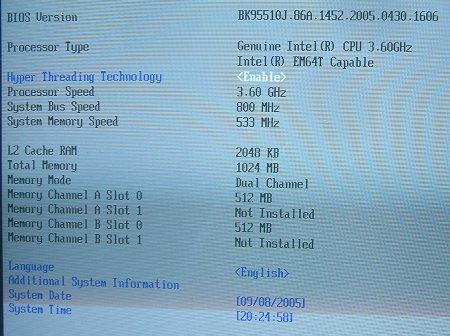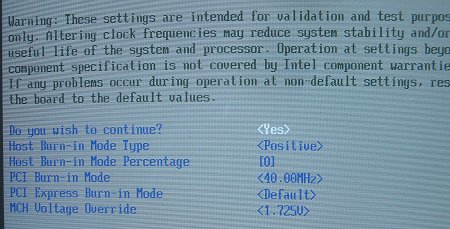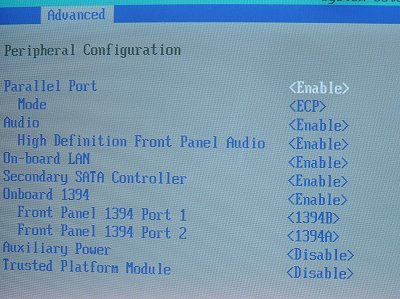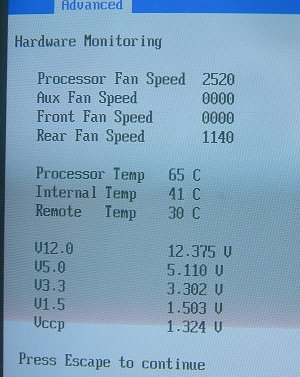Intel D955XBK BIOS

The first informative screen in the D955XBK's BIOS shows us processor and memory information. Of course, Intel's very own i955X motherboard supports all of its LGA775 CPUs, from lowly Celerons right up to expensive, fast dual-core models. That infers support for CPUs with native FSBs of 200MHz and 266MHz, respectively. System memory, when run with the common 200MHz FSB CPUs, can be set to DDR2-400, DDR2-533, DDR2-667, and DDR2-800. Dual-channel DDR2-400 provides, theoretically, enough bandwidth to satiate the processor's requirement, and using, say, DDR2-667 or DDR2-800 memory, without the additional burden of onboard graphics, is relatively futile. It's best to go with lower latencies than higher bandwidth, we reckon. All major parameters are set from a separate configuration screen.

System RAM's latencies can be reduced in order to increase performance. We ran with a pair of Corsair's 3-2-2-8 DDR2-667 modules at DDR2-533 speeds. It's nice to see that DDR2 voltage can be raised from the default 1.8v up to 2.08v. Enthusiast-orientated DDR2 RAM tends to require >2v for operation at its rated frequency and timings. Note that the SPD for the modules is rather relaxed.

Where the D955XBK Extreme really falls down is in providing the user with easy-to-use FSB and CPU (voltage) adjustment. One can add up to 10% extra clockspeed from the menu shown above, but it's far, far less than what's available on most partners' boards, including the ABIT and Gigabyte models reviewed here. It's somewhat strange that Intel provides a reasonable degree of MCH voltage adjustment but then doesn't do the same for the CPU. This may, of course, change with newer BIOS release, and Intel seems to update pretty < a href="ftp://download.intel.com/design/motherbd/bk/BK1959P.pdf"/>often

Toggle to your heart's delight.

A rather toasty Pentium 4 660, according to the BIOS. We'd like to see DDR2 voltages reported here, too.









